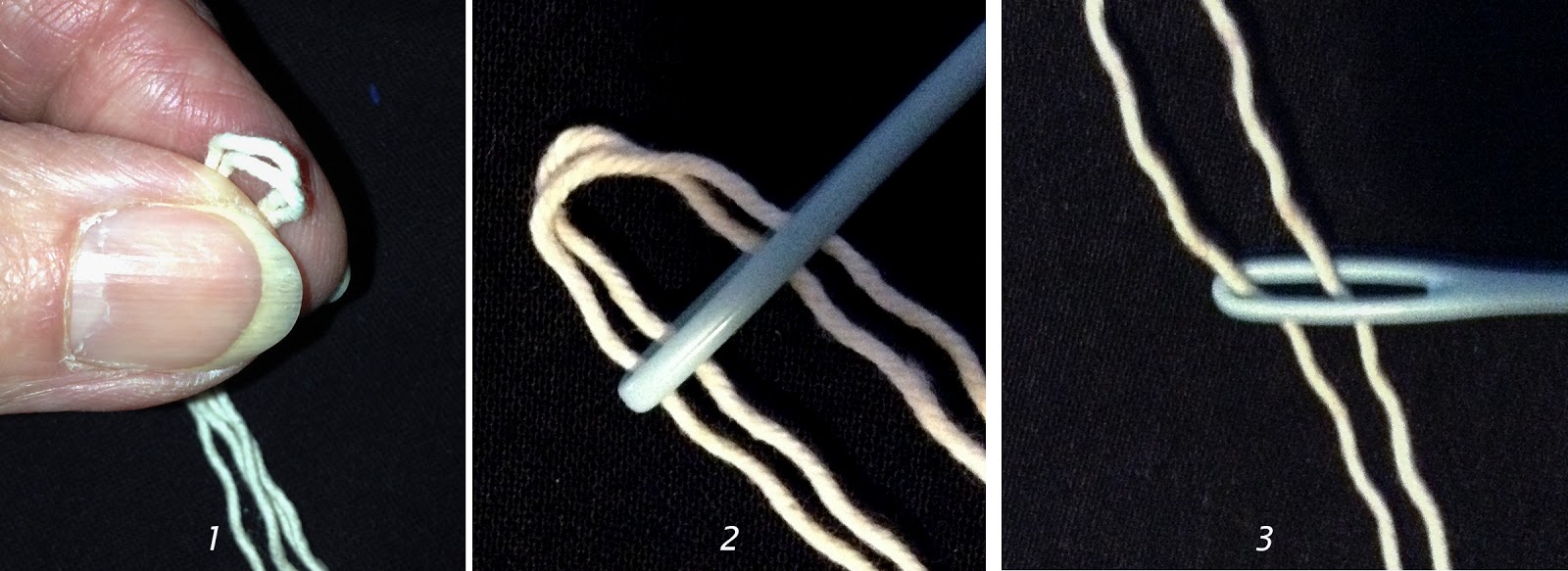I have sewn almost all my life, certainly since age six. A needle, of course, is a necessary evil for those of us who sew, and there are many from which to choose. I am talking today about the needles and gadgets I use during the machine quilting process. You will need different styles for appliqué and hand quilting.
My go-to needle for burying threads into the nether regions of my quilt is a Quilt Basting Needle. It is long. It is thin. It has a longish eye. Length makes it possible to grab the needle easily to pull through the quilt. Thin helps it go through tight places between stitches. The long eye makes it easy to thread. My #7 needles are 2 3/8 inches long. Love 'em! However, they can be hard to manage with short threads (read on for the work around).
Another option that I keep on hand are Easy Threading needles. These allow the thread to slide through a gate from the top and are quick and easy to thread. I find however that they can shred silk and polyester threads. They may damage cotton thread, but it is not obvious. If you are stuck with a short thread and the needle causes harm, you may find yourself squealing in frustration. They are also shorter (mine are 1 7/8 inches), which may help with moderate length tails.
Sometimes it is hard to thread a standard needle, especially with two threads to manage. I do it the way I was taught to thread a yarn needle. Fold the two threads together as one, squash them between your thumb and forefinger and slip the eye of the needle over both loops. Grab those loops and pull the ends of the thread through. That's why I like the long eye of the basting needle. In the photos I have used a yarn needle and string so it is easy to see.
Now for handling some problem situations. Below are my favorite tools:
Looks like a surgical tray doesn't it? I am sure you are familiar with the tweezers and needle threader. The hemostat is a special tweezer that locks the grip of the pinchers. It is a super tool for both medical and sewing needs!
Situation #1: You have two threads that are only about 2-3 inches long. By the time you have have the needle threaded you don't have enough thread leeway to get the needle into the fabric in the right place.
Solution: Tie a square knot. Use the tweezers to help if your fingers are getting in the way. You can use a shorter needle. You can try the Easy Threading needle, but if the thread shreds or breaks, you will have to move on to Situation #2. I like to run the long basting needle into the fabric and batting leaving the eye out about 1/2 inch. Put the wire of the needle threader through the eye of the needle. Using the tweezers pull the threads up through the wire and pull the threader with threads through the needle eye. The hemostat pinchers are a bit thick for use with the needle threader so I use the skinny-pointed tweezers.
Situation #2: You have two threads that are way to short to manage. Never fear, you can do it.
Solution: First you need to get a good knot tied. The square knot and surgical knot are the options here. I often get the threads tangled and have to start again, but the tweezers and hemostat will help greatly with the job. I will grant you that it is not easy to tie short threads, but it is possible. The hemostat is good for the surgical knot when one thread is a little longer. Once the knot is tied you can get the threads through the eye of the needle with the needle threader as in Situation #1.
TIP: If your threads are less than 1 inch long you need to rip a few more stitches out. The knot should hold it under the fabric, but it will be more dependable with more tail attached. I know that when I hand sew with silk thread the knot will pull right through if I don't beef it up a bit.
TIP: If I know my thread tail length is iffy, I pull it through to a place where I know I will be quilting over it. Just a little more insurance.
The hemostat is extremely useful for pulling a wedged needle through the fabric when it is hard to grasp and pull or if you have arthritic fingers. Although not long, it can be a big help in turning a tube right side out. It is one of my favorite gadgets.
I know this week's post is pretty basic, but it took time for me to develop reliable solutions to the needle and thread games so maybe it will help some of you.
I attended the AQS Quilt Show in Albuquerque last week and spent one day soaking up the fabulous work of award winning quilters such as Margaret Soloman-Gunn, Marilyn Badger, and Renae Haddadin among others. The quilts were stunning. The Egyptian tent makers were there too. I plan to spend the next 2 or 3 posts on a vicarious visit to the show. Please join me.





















